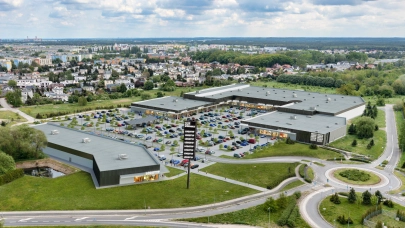
The current economic downturn may result in more mergers and acquisitions in most of the CEE countries. Owners of some hotels and retail centres may divest their assets to minimize loss. Property Forum asked Csaba Polacsek, Partner, Advisory Services at PwC Hungary about the mood of the possible buyers and the remaining risks in the coming years.
What are the major drivers to boost M&A activity in the CRE industry in Europe?
The most decisive driver for M&A activity is the availability of funding but to the contrary the question it affects negatively under the current interest conditions. The Russian aggression also negatively affects the neighbouring countries for Western investors, although local players’ approach is more realistic. Paired with the low intention of sellers to realize a discount to perceived values, we see a major mismatch in pricing and decreasing transaction activity.
On the boosting side, due to Covid-triggered changes, larger real estate players shifting their portfolio to booming sectors like logistics and industrial which means increased M&A activity (besides the new developments) and of course, divesting from the underrated asset classes. We also expect opportunistic buyers for the distressed asset classes as governmental supporting programs are phasing out in the region.

Csaba Polacsek
Partner
PwC Hungary
Which asset classes are most affected within the industry?
The lingering effect of Covid still defines the market from different aspects. The most sought-after classes are still the industrial and logistics assets while hospitality and hotels are on top of divestment lists.
The soaring inflation and drying mortgage finance market - in most countries new mortgage reimbursements fell below 50% on a y/y basis - has put the residential market under heavy pressure which also has an immediate effect on the demand for new development plots.
The office market is traditionally the biggest stake of the CRE market; however, a couple of new projects have been postponed and the rental take-over has also dropped. Retail is still struggling after the hit of covid the booming utility prices, inflation, and rise of living costs are cutting back the purchasing power of the customers. Food stores and groceries remained favourable tenants.
Do you expect a significant growth of M&A among service providers (in the CRE sector) as some of the big global players already think about uniting their forces?
When costs are rising and interest rates reach the decade’s top the stakeholders always must react. Bigger fishes usually eat smaller fishes at such times. However, we do not observe uniform trends valid for all the surveyed countries and sectors. In 2022 we have seen some consolidation in certain countries, but for 2023 - as we described earlier - we expect reducing transaction numbers until the market reaches the new equilibrium which can enforce further consolidation by cost-side pressure and lack of affordable (re)financing.
What about the financial background of possible mergers or acquisitions in the hospitality sector?
The hospitality sector is still suffering from the aftermath of the Covid lockdown and travel restrictions. External (bank, bond) financing is practically missing from the market and only direct financing – equity, funds – is available. It results in increased yield expectations which can only be fulfilled with very distressed pricing. So those players who have access to these funds are eagerly scanning the market, waiting for opportunistic deals. We already see the first movements on the market. Hotels/hostels in the second location could be converted to rented apartments and/or student housing in the long run.
Construction companies also face several challenges as new development projects have been put on hold in many countries. Do you expect a bigger consolidation within that sector too?
The situation varies in the countries depending on their current market characteristics. In the Czech and Romanian markets, the larger players seek the advantage to acquire smaller cash-trapped companies while in the Polish and Slovakian markets the local entities of large international players are present whose consolidation is expected only on pan European level.
The Hungarian market is closer to the first model complemented by the peculiarity that those constructing companies are in a better situation and have their development as well with which they can keep a fixed capacity, but large, unsold residential stocks backed by bank loans could be dangerous for such companies. Energy efficiency and ESG projects could be a major stake in the market.
Some stronger players, mainly developers in CEE already have invested in Western companies. Do you see chances to see more such transactions as economic conditions are worsening across the continent?
In the last 10 years, the real estate sector was soaring in the whole CEE region or even on a global level. That led to the growing number of local players reaching the size where diversification should be taken into consideration. After stepping out to neighbouring countries within the region in the last couple of years they have already entered Western European markets as well.
To equalize the difference in the yields of the two market, eastern companies tend to enter non-core (secondary locations or assets, value-add investments, green or brownfield projects, etc.), and only a few of them intends to invest in prime assets and accept the lower yield. Our local offices expect these trends to continue except for Romania where we foresee some retreat from those investments due to the shrinking funding sources and better investment opportunities in the local market.
Who would be the biggest winner of the recent possible wave of M&A? Financially strong developers, resilient retailers or institutional investors who can buy large portfolios for a relatively low price?
We are convinced that the biggest winners will be the large funds with access to perpetual or long-term capital, such as SWFs, pension funds, and HNWIs. Chinese companies are trying to retrieve funds from their local market and invest in Europe. The main question is how the governments (both Europeans and the Chinese) will react to this plan. National state-owned banks, development banks, and investment funds might have a great role in financing buyers in cross-border M&A deals.



